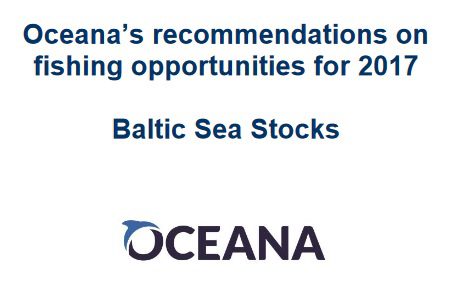Report | September 29, 2016
Oceana recommendations on fishing opportunities for 2017. Baltic Sea Stocks
In advance of the Fisheries Council decision in October on fishing opportunities in the Baltic Sea, Oceana releases its recommendations for setting total allowable catches (TACs) for 2017, in line with the most recently available scientific advice and aimed at ensuring Baltic fisheries recover from overfishing before 2020.
The end of overfishing is necessary not only to guarantee the sustainable exploitation of fish resources at present but also for the future in order to recover the profitability and social prosperity of fishing activities. Achieving good environmental status (GES) of the oceans is also a main goal of the Marine Strategy Framework Directive (MSFD)1, which shares a 2020 deadline.
EU Member States must therefore ensure that TACs are in line with scientific advice and guarantee stocks are above biomass levels that are able to provide the highest long-term average catch (MSY). However, historical disregard of this premise has lead EU and Baltic stocks into a dire situation – granting short-term benefits to the fishing industry but putting an enormous economic impact in the mid-term. A clear example of this is Western cod, put to the brink of collapse by mismanagement resulting in the closure of the fishery as the only viable option left.
Oceana urges EU Member States to turn the tide without delay, adhere to science when setting quotas and warns that after 2020 overfishing EU stocks will become illegal under the EU law.
To ensure the long-term stability of Baltic Sea fisheries, the EU Council of Ministers must:
- Follow scientific advice when setting fishing opportunities, prioritising stock recovery and putting an end to overfishing;
- Stop all directed cod fisheries in areas 22-24;
- Set a TAC for the eastern cod stock ensuring long-term recovery.


